-
-
Fast delivery
-
top
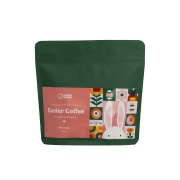
Limited edition coffee beans Easter Coffee, 250 g
£6.59 £10.99 -40%
Add to basket-
New
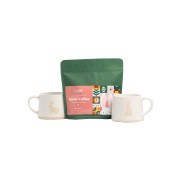
Easter mug and coffee bean set Easter with Alex & Sophie
£14.99 £19.99 -25%
Add to basket-
1+1
-
Fast delivery
-
top
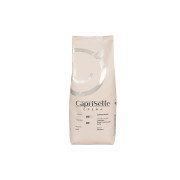
Coffee beans Caprisette Crema, 1 kg
£27.90Add to basket-
1+1
-
Fast delivery
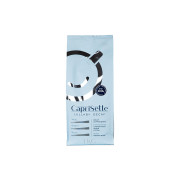
Decaf coffee beans Caprisette Lullaby Decaf, 1 kg
£28.90Add to basket-
1+1
-
Fast delivery
-
top
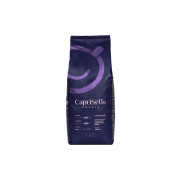
Coffee beans Caprisette Royale, 1 kg
£26.90Add to basket-
+Gift
-
1+1
-
Fast delivery
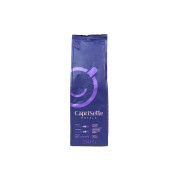
Ground coffee Caprisette Royale, 250 g
£8.90Add to basket-
+Gift
-
1+1
-
Fast delivery
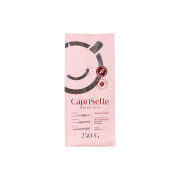
Ground coffee Caprisette Dolce Vita, 250 g
£7.90Add to basket-
+Gift
-
1+1
-
Fast delivery
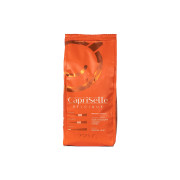
Ground coffee Caprisette Belgique, 250 g
£6.90Add to basket-
+Gift
-
1+1
-
Fast delivery
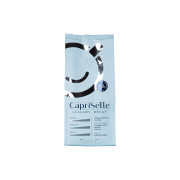
Decaf ground coffee Caprisette Lullaby Decaf, 500 g
£15.90Add to basket-
1+1
-
Fast delivery
-
top
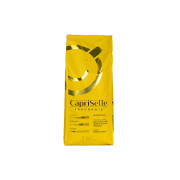
Coffee beans Caprisette Fragrante, 1 kg
£24.90Add to basket-
1+1
-
Fast delivery
-
top
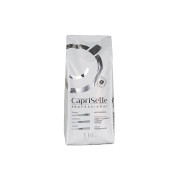
Coffee beans Caprisette Professional, 1 kg
£22.90Add to basket-
1+1
-
Fast delivery
-
top
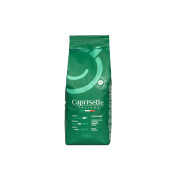
Coffee beans Caprisette Italiano, 1 kg
£26.90Add to basket-
1+1
-
Fast delivery
-
top
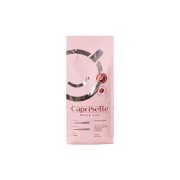
Coffee beans Caprisette Dolce Vita, 1 kg
£27.90Add to basket-
1+1
-
Fast delivery
-
top
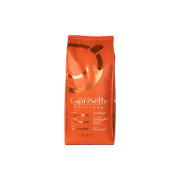
Coffee beans Caprisette Belgique, 1 kg
£24.90Add to basket-
1+1
-
Fast delivery
-
top
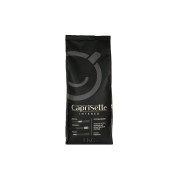
Coffee beans Caprisette Intenso, 1 kg
£19.90Add to basket-
1+1
-
Fast delivery
-
New packaging
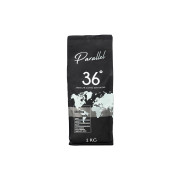
Coffee beans Parallel 36, 1 kg
£31.90Add to basket-
1+1
-
Fast delivery
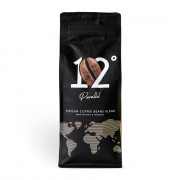
Coffee beans Parallel 12, 1 kg
£31.90Add to basket-
1+1
-
Fast delivery
-
New packaging
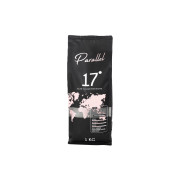
Coffee beans Parallel 17, 1 kg
£31.90Add to basket-
1+1
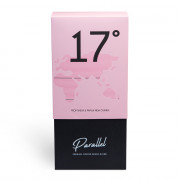
Coffee beans Parallel 17 in a gift box, 1 kg
£32.90Add to basket-
Fast delivery
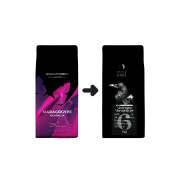
Specialty coffee beans Black Crow White Pigeon Nicaragua Maragogype, 1 kg
£25.83 £36.90 -30%
Add to basket-
Fast delivery
-
New packaging
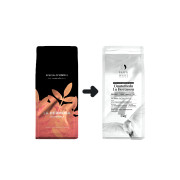
Specialty coffee beans Black Crow White Pigeon Guatemala La Hermosa, 1 kg
£25.13 £35.90 -30%
Add to basket-
1+1
-
Fast delivery
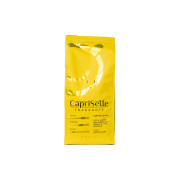
Coffee beans Caprisette Fragrante, 250 g
£6.90Add to basket-
+Gift
-
1+1
-
Fast delivery
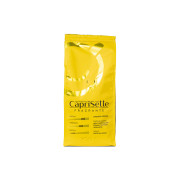
Ground coffee Caprisette Fragrante, 250 g
£8.90Add to basket-
1+1
-
Fast delivery
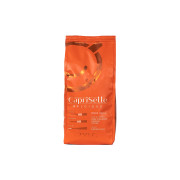
Coffee beans Caprisette Belgique, 250 g
£6.90Does the roasting affect the coffee taste?
When choosing coffee we recommend to pay attention to the roast levels. This bean processing step is very important and can either reveal and balance the flavors or ruin them. Choose lightly roasted coffee if you want to try the real taste from nature. Usually, light roasts are made from high quality beans, for the purpose of highlighting and bringing out its all finest qualities. Medium roasts are very popular in blends, when the goal is to balance the taste of different types or beans that are grown in different regions. Dark roasting can result in a dark color and chocolaty bitterness, that is why it is especially suitable for italian, belgian, french type coffee blends. Though, dark roasts should not be mistaken with burnt coffee beans. Very oily and pungent coffee beans have nothing in common with high quality dark roasts. This type of product can be found at a very low price, however their taste will not be as pleasant.
Is this comment useful?Read more Show lessHow does the coffee origin impact coffee?
It is important to mention that the best conditions for growing coffee are near the equator, that is why the number of countries where you can find coffee plantations - is very limited. This area is called the “Coffee Belt”. However, due to the soil and climate peculiarities, local farmers tend to choose the most yield giving plant varieties (there are about 150 Arabica types in the world, Robusta - about 50). Due to this reason, coffee in each region is very different. For instance, coffee originated from different American regions tends to have a fairly universal taste. The majority of them have little sourness (fruitiness), the dominant flavors are nutty, it is possible to feel slight bitterness, flower aromas. It is also important to mention that the majority of the whole world coffee is grown in Brazil, that is why the coffee from there is considered to be a classic taste standard. Coffee that is grown in African regions is more fruity, its flavor can have a softer or stronger acidity. This coffee is medium intensity and is especially liked by coffee experts. The richest flavored coffee of this region is often from Ethiopia, so to get acquainted with this region's flavors choose coffee from this country. Meanwhile the coffee that is grown in Asia is usually the “heaviest”. When this coffee is made it has a dark, intense color, and the aftertaste can be felt for a long time. Dominant notes - chocolate, spices, and can even have soil or wood aromas. For example, coffee grown in Sumatra region due to its region of origin, as well as special local processing has almost no acidity. Brown sugar, cinnamon and caramel can be felt in this type of coffee. If you prefer a classic coffee taste - coffee grown in Sumatra can become your starting point in the journey of getting acquainted with quality coffee.
Is this comment useful?Read more Show lessHow to identify high quality coffee?
The highest quality coffee is usually lightly roasted. Consequently, its color tones will always be light brown. High quality beans will be in a classical form, healthy, without any significant damages. The aroma will always be pleasant and resemble natural, in nature existing scents - flowers, fruits, wood, soil. Whereas low quality beans are oily, can have dampness, mold scent. Burnt beans are also identified as a low quality coffee. They have a pungent taste not only after opening the package, but also after making the coffee. Only in low quality coffee bitterness and unpleasant sourness can be felt at the same time. This, during processing developed sourness, has nothing to do with the fruity lime, raspberry, cranberry or other fruits and berries sourness.
Is this comment useful?Read more Show lessCaffeine: What kind of coffee does have the most of it?
Most caffeine is found in robust coffee beans - twice as much as in arabica beans. Therefore, a blend that includes robusta, or 100% robusta coffee, or instant coffee (which is mostly made from robusta) will have more caffeine than 100% arabica coffee. The amount of caffeine also depends on the method of coffee preparation. Caffeine is soluble in water, so the longer the coffee to water ratio, the more caffeine there will be in the coffee. So comparing a small cup of espresso to a cup of coffee in which water was simply poured on ground coffee, the adviser will have more caffeine. Although in the sense of taste it may turn out the other way around.
Is this comment useful?Read more Show lessWhat are the main types of coffee?
There are many types of coffee, but the most common and popular are these three: Arabica, Robusta and Liberica. Arabica: Arabica coffee trees are much more difficult to grow than Robusta or Liberica. They are particularly sensitive to cold, temperature differences, they need shade and higher altitudes. However, the palette of flavours that develop in ripening Arabica coffee berries is the richest. There are numerous of Arabica subspecies and they all have their own special taste characteristics. Dominated by sweet and sour, fruity berry notes. Robusta: Robusta coffee trees are not as delicate as Arabica. They are much more resistant to climatic conditions and pests. Therefore, they are much cheaper and easier to grow. The palette of flavours is narrower. Robusta has twice as much caffeine as Arabica. Mostly used in coffee blends and less often on its own. Robusta provides thickness in body, stronger caffeine kick and bitterness to the coffee blend. Dominated by bitter, intense flavour notes. Liberica: Liberica is the least popular of these three species because it does not have such flavour characteristics as Arabica or Robusta. Liberica is used to make instant coffee. How to distinguish Arabica, Robusta and Liberica? Arabica, Robusta and Liberica beans can also be distinguished visually. Arabica beans are oblong in shape and have a wavy stripe in the middle. Robusta beans are round in shape, smaller, the strip in the middle is straight. Liberica beans are much larger than Arabica or Robusta.
Is this comment useful?Read more Show lessAbout coffee
Our assortment of coffee is exceptionally wide: from brands famous all over the world to small local roasters, from beans roasted moments ago to capsules, pads or pods, from blends to unique specialty coffee varieties. How to Choose the Right One?
Based on the Type of Coffee
Depending on your preferred brewing method, you can choose from various types of coffee: coffee beans, ground or instant coffee, coffee capsules, pods or ESE pads. Don’t forget though that the tastiest coffee is the one that’s been brewed using freshly ground beans. Wherever possible, we recommend buying freshly roasted coffee beans and grinding them separately prior to each preparation of a drink (unless, of course, you have a bean-to-cup machine that does it all for you!)…
Based on the Variety
Once you’ve decided on the type of coffee, consider its variety too. Two words are frequently encountered on the packaging: “arabica” and “robusta”. Most coffee lovers have heard both of them at least once, but not many people can explain what they mean exactly and what’s the difference between them.
Arabica coffee
Both of these words refer to coffee bean varieties. The arabica variety is more expensive, characterised by more varied nuances of flavour and tasting notes that aren’t typical of the traditional taste at all sometimes. It grows higher up in the mountains and is more sensitive to the conditions of climate and the surrounding nature, so its journey is six times more difficult than that of robusta. Nowadays, the word “arabica” is synonymous with high-quality coffee. Due to its exceptional flavour, many people are now looking for packaging with the phrase “100% arabica” on it.
Robusta coffee
The robusta variety grows at lower altitudes, is less susceptible to various pests and has twice as much caffeine as arabica does. Even though robusta can be grown at a much lower cost, it’s never consumed on its own — well, except in Vietnam, where it’s mixed with condensed milk. More often than not, the robusta variety is combined with arabica. It’s robusta that endows our coffee with the classic flavour that most of us are used to, namely the stronger, more bitter notes. If you see the words “blend (arabica 70% / robusta 30%)” on the packaging of your coffee, know that this is the kind of taste that you can expect.
Specialty coffee
Returning to the topic of arabica, it’s worth noting the difference between arabica blends and single-origin arabica coffees. The flavour of blends is more subtle, not as vivid as the taste of single-origin varieties. Single-origin coffees of the highest quality are referred to as “specialty coffee” — they include some of the world’s finest varieties and are characterised by a higher number of unusual, unique tasting notes. It is particularly valued by true connoisseurs.
Before you make the decision on whether you’re going to buy coffee made up of 100% arabica (blend or single-origin) or whether a blend of both arabica and robusta is better suited to your taste, consider the brewing method that you’re going to use. The flavour of blends (both 100% arabica and arabica + robusta) is best unveiled by bean-to-cup machines, semi-automatic machines or moka pots. If you enjoy filter coffee or use various brewing tools, single-origin bans would be your best bet: each new brewing device will reveal different colours included in the complex, varied flavour palette of such coffee. If you decide to try specialty coffee, there’s no need to worry about the brewing method though: all preparation techniques are guaranteed to suit it.
You can also find selected coffee ranges for different preparation methods on our website. For example, coffee for bean-to-cup machines, as well as Percolator, Cafetiere, Chemex, Pour over, Aeropress and Cold brew coffee. So take advantage of these product categories when choosing a coffee for your specific brewing method.
Based on the Roast Level
Depending on your preferred brewing method, choose beans of a darker or lighter roast. The latter are best suited for drip or pour-over coffee makers, while beans of a medium or medium dark roast are perfect for espresso machines and moka pots. You should also keep in mind that light-roasted coffee is usually fruitier and more acidic, while the darker the roast is, the more bitter the prepared drink will be.
To make the right choice, in the ‘coffee for espresso machines‘ category you will find the most suitable options for this type of coffee making. And if you prefer mocha coffee, visit the ‘coffee for moka pot‘ page.
Based on a Growing Region
You can successfully guess the tasting notes of a certain coffee even if they’re not written on its packaging — all you need to know is where it comes from. Coffee grown in different continents is characterised by different flavours typical of the beans of that region.
African coffee is usually more acidic. In it, you’re likely to encounter notes of lemon, currants, blueberries, lime, as well as other flavours found in coffee characterised by a lower pH.
Bitter, spicier notes are typical of Asian coffee. The dominant flavours include various spices, wood, tobacco and dark chocolate.
The flavour of South American coffee is particularly well-balanced: you can find both chocolaty and fruity notes in it. If you’re tempted to try out the coffee of this region, consider its processing method too: beans processed with the help of the washed method is more acidic, while the dry process endows other South American coffees with a higher level of bitterness.
A bit higher up the map, in Central America, the features of beans become “heavier” and unique notes of sweet tobacco, so typical of this region, appear. Flavours of various fruits and nuts are also common.
Based on the Tasting Notes
The descriptions of most coffees include their tasting notes too. It’s important to understand though that these are not artificial or natural flavourings — we’re talking about notes that occur in the prepared drink naturally, just like the tastes encountered in high-quality wine. Also, these are not vivid, instantly recognisable flavours of blueberries, blackberries or chocolate — rather, it’s something that might remind you of the listed foods. This is extremely subjective too! What might make one person think of blueberries may be associated with a completely different flavour when tasted by someone else. Such tasting notes are simply used to describe the flavour profile of a certain coffee. If these notes are chocolaty or nutty, the coffee will be characterised by a higher level of bitterness, but if its flavours are reminiscent of fruit or berries, the prepared drink will have a sweet-and-sour taste. In any case, you should allow yourself to be surprised and to discover the unique flavours that you can detect in the taste of your coffee!
Read moreWe have updated our cookie policyOptionsCookies! They are always useful, but we cannot use them without your consent.You can select which cookies you agree to use. Some of them are essential and cannot be turned off.
-


